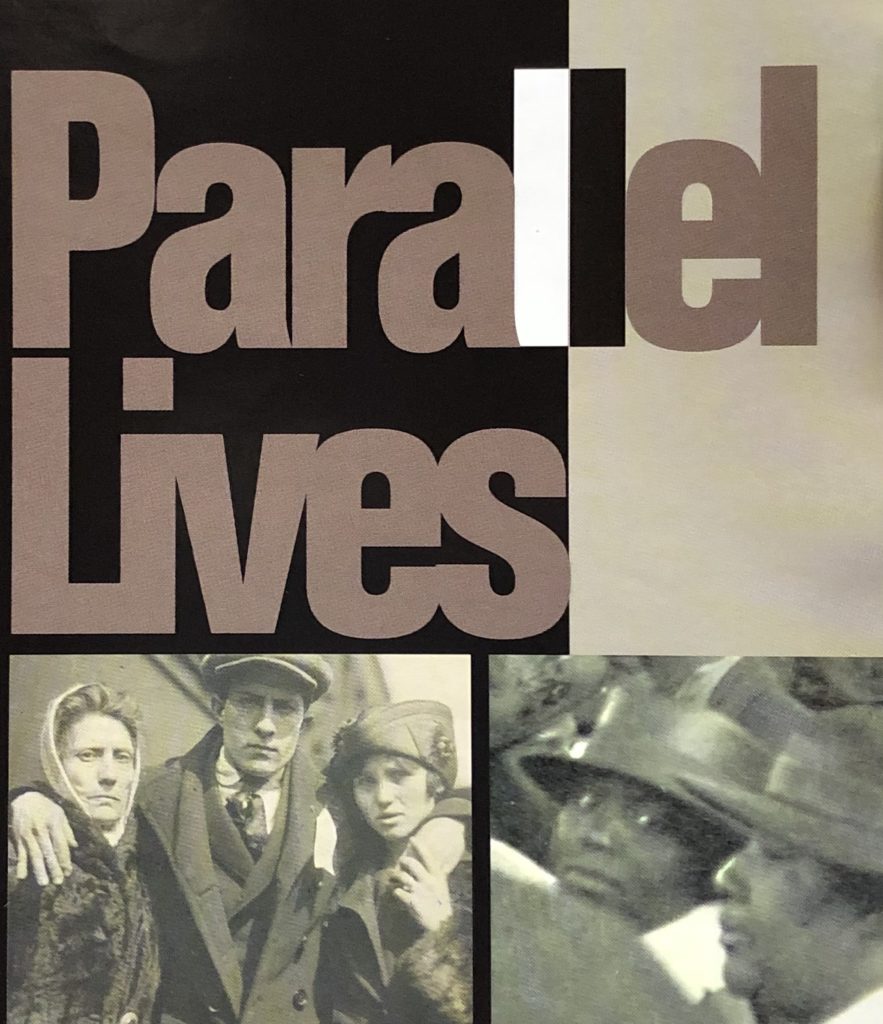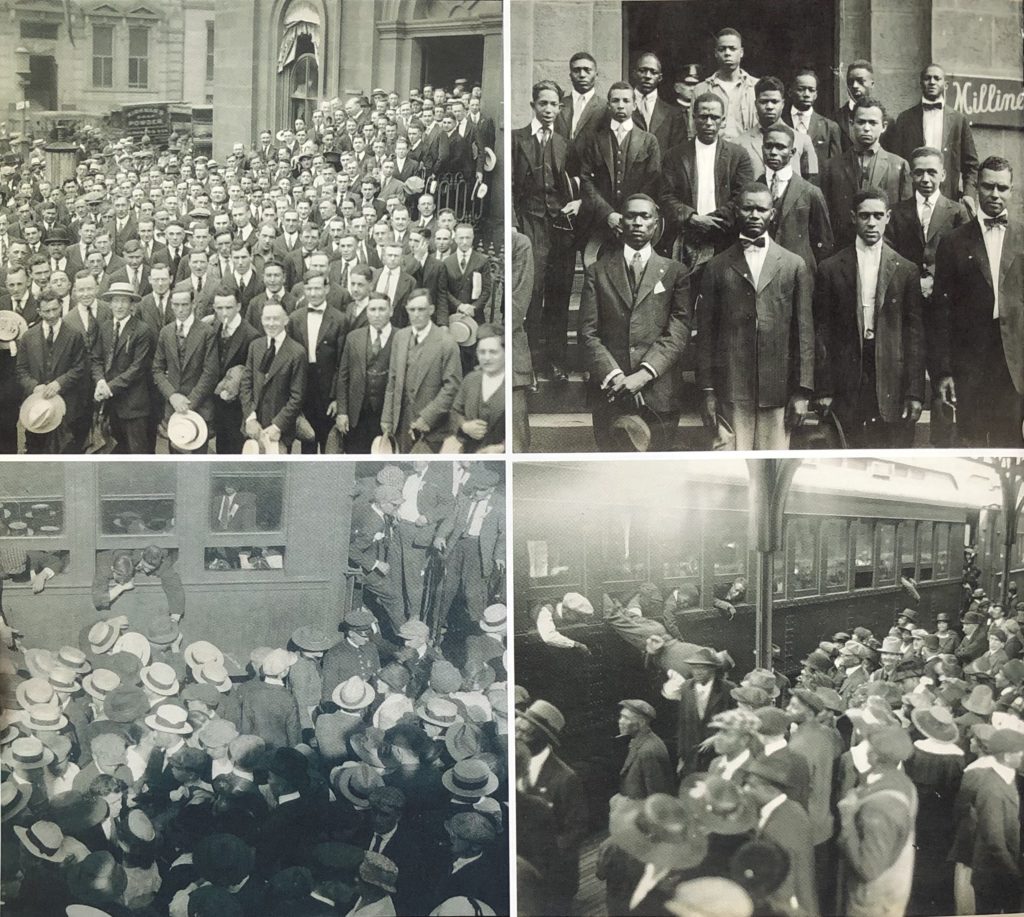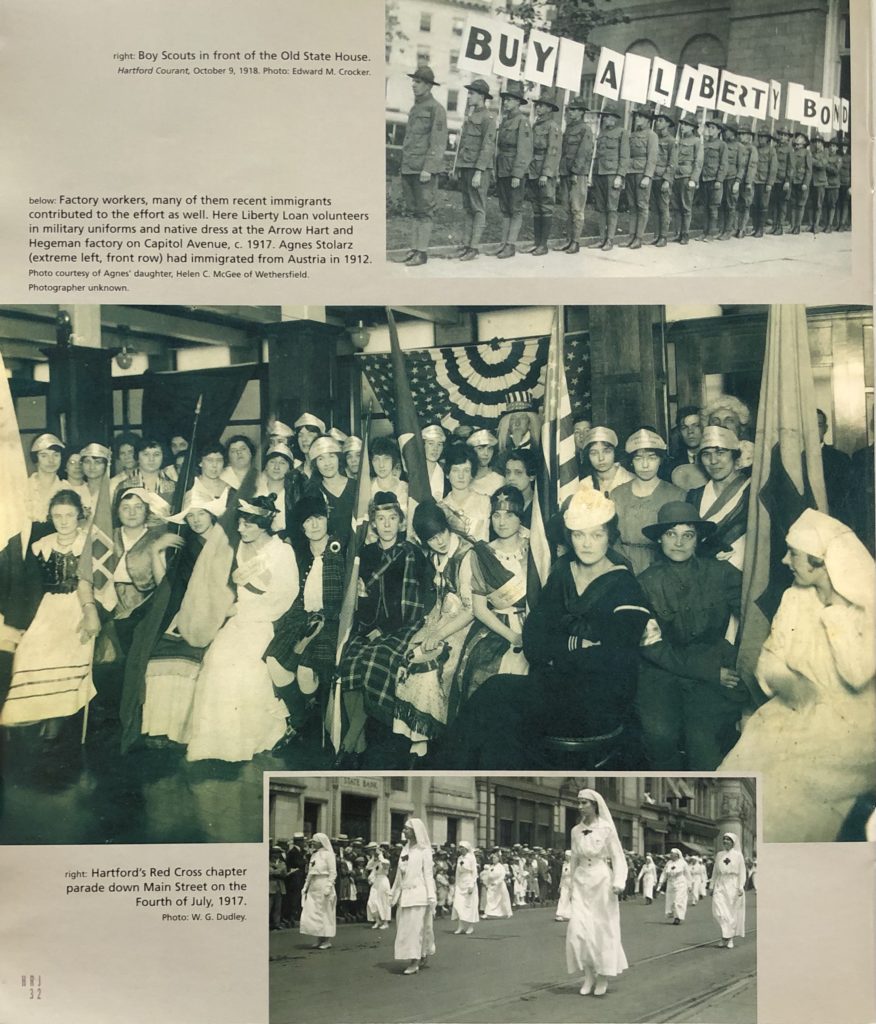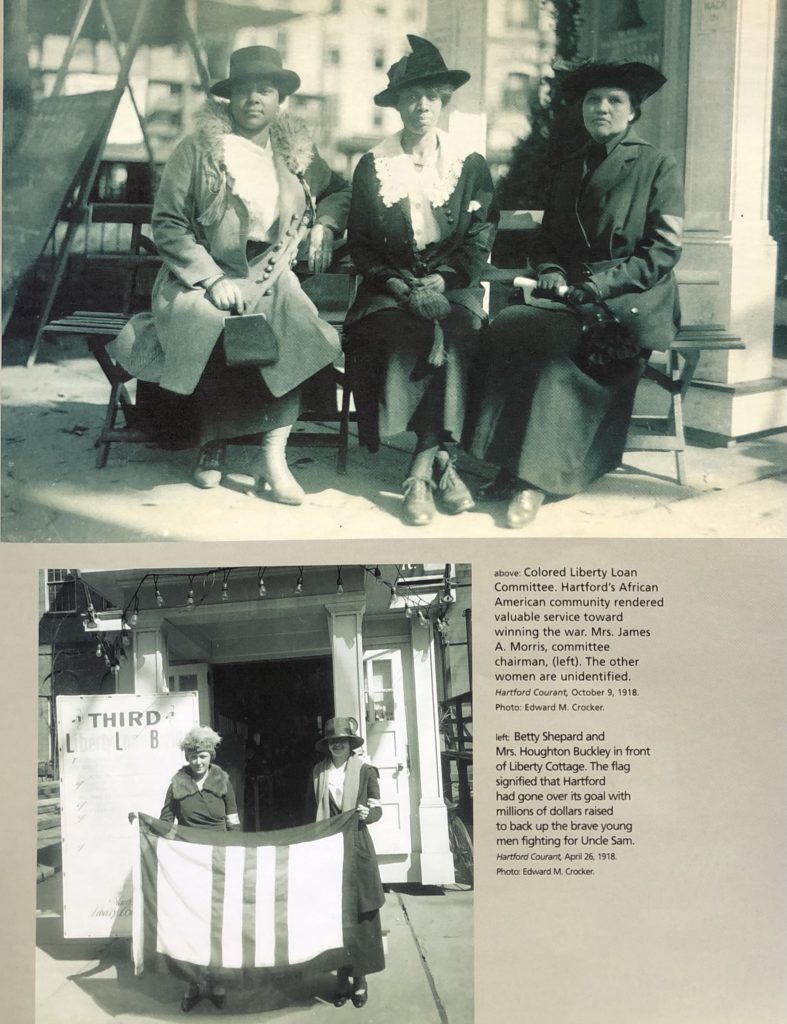
left: A doughboy draftee bids goodbye to his mother and wife before leaving for Camp Devens. Hartford Courant, April 7, 1918. Photo: Edward M. Crocker right: Relatives and friends bidding their loved ones farewell. Hartford Courant, April 7, 1918. Photo: Edward M. Crocker. State Archives, Connecticut State Library
By Mark H. Jones
(c) Connecticut Explored Inc. 2003 Nov/Dec/Jan 2004
Subscribe/Buy the Issue!
During World War I, African Americans and whites were segregated in their activities both at war and on the home front as these photos of draftees and Liberty Bond drives show. The first set of photographs, many of which were published in The Hartford Courant, document African American and white draftees leaving for Camp Devens in Massachusetts and Camp Meade in Maryland, respectively. African American soldiers went to boot camps in “colored only” trains, and while some saw combat, most worked behind the lines and at major Allied ports at menial jobs very similar to their employment before the war: stevedores, messengers, and chauffeurs. About their sendoff, the Courant commented: “the contingent bid farewell to Hartford amid a demonstration of loyalty seldom shown by friends of anyone.” The second set of photos of Liberty Loan promotions show that women experienced similarly segregated activities in their support of the war effort. Liberty Loan parades and promotions were an important way for the U.S. government to raise funds to pay for World War I.
Unless otherwise noted, all photos from the State Archives, Connecticut State Library.

top left: White draftees just before leaving for Camp Meade. Hartford Courant, June 23, 1918. Photo: Edward M. Crocker. top right: The first contingent of African American draftees from the state pose on the corner of Trumbull and Pearl streets, April 30, 1918. Photo: Edward M. Crocker. Bottom Bottom left and right: African American and white draftees boarding separate trains, 1918. Photos: Edward M. Crocker for the Hartford Courant. State Archives, Connecticut State Library

top: Boys Scouts in front of the Old State House. Hartford Courant, October 9, 1918. Photo: Edward M. Crocker. Connecticut State Library. middle: Factory workers, many of them recent immigrants, contributed to the effort as well. Here Liberty Loan volunteers in military uniforms and native dress at the Arrow Hart and Hegeman factory on Capitol Avenue, c. 1917. Agnes Stolarz (extreme left, front row) had immigrated from Austria in 1912. Photo courtesy of Agnes’ daughter, Helen C. McGee of Wethersfield. Photographer unknown. bottom: Hartford’s Red Cross chapter parade down Main Street on the Fourth of July, 1917. Photo: W. G. Dudley. Connecticut State Library

top: Colored Liberty Loan Committee. Hartford’s African American community rendered valuable service toward winning the war. Elizabeth R. Morris, committee chairman (left), Mary A. Johnson (center), and Rosa J. Fisher (right). Hartford Courant, October 9, 1918. Photo: Edward M. Crocker. Bottom: Betty Shepard and Mrs. Houghton Buckley in front of Liberty Cottage. The flag signified that Hartford had gone over its goal with millions of dollars raised to back up the brave young men fighting for Uncle Sam. Hartford Courant, April 26, 1918. Photo: Edward M. Crocker. State Archives, Connecticut State Library
Explore!
Read more about Connecticut in World War I in Spring 2017 and on the Connecticut at War TOPICS page.
Read more about Elizabeth Morris, Mary Johnson, and Rosa Fisher in “Uncovering African American Women’s Fight for Suffrage,” Summer 2020
